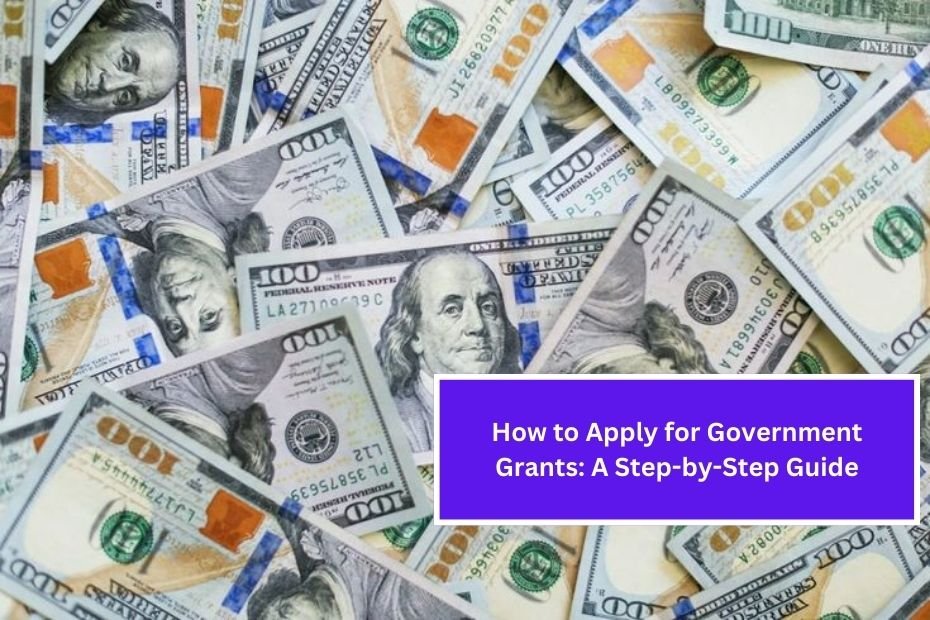Government grants can provide essential funding for individuals, organizations, and businesses looking to start projects, conduct research, or enhance community services. Applying for a grant can seem overwhelming, but with the right approach, it can be a straightforward process. This guide will take you through the steps of applying for government grants in easy-to-understand language.
What Are Government Grants?
Government grants are funds provided by the federal, state, or local government to support specific projects or initiatives. Unlike loans, grants do not need to be repaid, making them an attractive option for those in need of financial assistance. Grants can be used for various purposes, including:
- Education and research
- Community development
- Health and human services
- Environmental projects
- Arts and culture
Step 1: Identify Your Needs and Goals
Before applying for a grant, it’s essential to define your needs and objectives. Ask yourself:
- What project do I want to fund?
- What are the goals of this project?
- How much money do I need?
Clearly outlining your needs will help you find the right grant programs that match your objectives.
Step 2: Research Available Grants
Once you know your goals, it’s time to research available grants. Here are some resources to help you find grants:
1. Grants.gov
This is the main website for finding federal grants. You can search by category, eligibility, and funding amount.
2. State and Local Government Websites
Many states and local governments offer their own grant programs. Check your state’s official website for available grants.
3. Nonprofits and Foundations
Many nonprofit organizations and private foundations provide grants for specific purposes. Look for foundations related to your project area.
4. Libraries and Community Centers
Local libraries and community centers often have resources and information about grants.
Step 3: Review Eligibility Requirements
Once you find potential grants, read the eligibility requirements carefully. Not all grants are open to everyone, so make sure you qualify before spending time on an application. Common eligibility criteria may include:
- Type of organization (nonprofit, individual, business)
- Geographic location
- Project focus or purpose
Step 4: Prepare Your Proposal
A grant proposal is your chance to convince funders that your project is worthy of support. Here are the key components of a strong proposal:
1. Executive Summary
This is a brief overview of your project, including its goals, significance, and funding request. Keep it concise and engaging.
2. Statement of Need
Explain why your project is necessary. Use data and examples to highlight the issue you are addressing and its importance.
3. Project Description
Detail how you plan to implement the project. Include:
- Goals and objectives
- Activities and timeline
- Target audience
- Expected outcomes
4. Budget
Create a detailed budget that outlines how the grant funds will be spent. Include:
- Personnel costs
- Supplies and materials
- Travel expenses
- Indirect costs
5. Organization Information
Provide background information about your organization, including:
- Mission and vision
- Past achievements
- Qualifications of key personnel
6. Evaluation Plan
Describe how you will measure the success of your project. Include metrics and methods for collecting data.
Step 5: Gather Supporting Documents
Many grant applications require additional documents. Commonly requested materials include:
- Tax identification number
- Proof of nonprofit status (if applicable)
- Financial statements
- Letters of support or partnership agreements
Make sure to review the application guidelines for specific document requirements.
Step 6: Follow Application Guidelines
Each grant program has specific application guidelines. Follow these closely to ensure your application is considered. Pay attention to:
- Formatting requirements
- Page limits
- Submission deadlines
Step 7: Submit Your Application
Once your proposal is complete and all documents are gathered, submit your application. Most federal grants require submission through Grants.gov, while state and local grants may have different submission processes. Make sure to keep a copy of your application for your records.
Step 8: Follow Up
After submitting your application, it’s a good idea to follow up. You can contact the grant agency to confirm receipt of your application or to ask about the timeline for decisions. Be polite and professional in your communication.
Step 9: Prepare for the Decision
Grant review processes can take time. While you wait, prepare for both outcomes:
If You Receive the Grant:
- Review the grant agreement carefully.
- Understand the reporting requirements and deadlines.
- Be ready to start your project and track your progress.
If You Do Not Receive the Grant:
- Request feedback on your application. This can provide valuable insights for future submissions.
- Consider applying for other grants or revising your proposal based on the feedback received.
Step 10: Manage the Grant
If you are awarded a grant, it’s crucial to manage the funds properly. Here are some tips:
- Keep accurate records of all expenditures.
- Monitor your project’s progress against the goals set in your proposal.
- Prepare and submit any required reports to the funding agency.
Conclusion
Applying for government grants can be a valuable way to secure funding for your projects. By following these steps and being organized and thorough in your approach, you can increase your chances of success. Remember to stay patient and persistent, as the grant application process can take time. With dedication and careful planning, you can turn your ideas into reality with the help of government grants.

